Bad ideas and good ideas in growing roses
strawchicago z5
12 years ago
Featured Answer
Comments (19)
strawchicago z5
12 years agolast modified: 9 years agoseil zone 6b MI
12 years agolast modified: 9 years agoRelated Discussions
Hybrid tea rose next to a Floribunda?? Good or Bad Idea.
Comments (3)I agree with Jeri on the straight line bit. I have a very eclectic garden with all sorts of plants thrown in there. In that case, I might put a HT near a florrie and get away with it easily--cuz everything else is mixed together. But it does depend on which HT and which florrie. My neighbor's Mr. Lincoln is very tall (like 6 ft tall) and narrow. My florries are all about 3.5 tall--and when I grew Scentimental some years ago, I seem to remember it was about 3.5 ft tall also and shrublike. Therefore, around here, I would not plant Mr. Lincoln and Scentimental close together. But it might depend on on what growing region you live in (you don't have one listed). Many roses grow taller/shorter depending on where they are being grown. Perhaps the two would work well in your region, so try it if you'd like. The neat thing about gardening is that you can always dig up your mistakes (if it is a mistake) and plant it somewhere else. : ) Kate...See MoreGrowing a mimosa where one was previously...good or bad idea?
Comments (1)I don't understand why you want a new tree, of the same type, where the old tree was. If the old one was too big, the new one is going to get too large also. What type of tree is it, really. You say it's a mimosa, but I'm wondering if it's not just an Albizia julibrissin. If so, this plant is invasive (environmentally damaging) in much of the eastern US. You don't say where you are, but, if you are in an area where this tree is invasive and it is an Albizia julibrissin, you might want to reconsider! Albizia julibrissin has become a serious problem here in Tennessee, where I live. If I understood what you were saying, you seem to have a sprout coming from a root that was left after the stump was ground. If you get a good chunk of root, there's a good chance you could grow the sprout where you plant it (if you decide to keep it)....See MoreGlass Greenhouse; Good Idea or Bad Idea?
Comments (8)Yes, you can build a nice little working greenhouse from old windows. We did a 10x16 one about 15 years ago and I am still using it. Here it is in it's original configeration...All windows were wood framed salvage material. We cleaned them up, removed all old hardware. The roof windows are old double glazed, french doors. They were tempered glass. The side windows were old single glaze, storm windows. The north side did not have many windows and all solid walls were insulated. There is an automatic roof vent and a small exhaust fan on a thermostat. It is wired for electricity but I use a 50 gallon barrel filled from a hose as my water supply. I used to keep it modestly heated in the winter and covered it with a clear solar pool cover for those months.Because most of the windows were already 100 years old and the french doors were never meant to be roofing material, after a dozen years there began to be some rot. We did a major renovation of the south side roof and front wall. I found 2 used commercial skylights for $25 and bought some used modern vinyl windows from a salvage yard...a couple of them open and have screens. The building is still very useful as a greenhouse and also retains heat better now....See MoreInsurance for iphone 7? Good Idea or Bad Idea?
Comments (28)anglo, I'm the family tech support department. My kids are grown and out of the house now, but over the years, I've "supported" Macs, iphones, ipods and the ipad. Supporting involves using them when necessary to resolve problems. I was the one who needed to set up network (not just wifi) connections to a Windows system when a kid wanted to transfer school files to the family backup system. It was nearly impossible and much too hard. I debugged update problems, user problems, other hardware and software issues. I'm also in Silicon Valley and have a closer exposure to Apple and things and people in the Apple world than people elsewhere might have. Apple makes excellent hardware and software but I would call it on a par with its competitors on other platforms, not superior to. What they do excel at is creating marketing excitement and buzz, and passing out Kool-Aid to users to make them think they are in a special place when they use Apple products and convince them their products are worth premium prices. I have nothing against Apple products and I admire the company for what it's done to get to where it is. Personally, I think their products are overrated. I really dislike the inflexibility of their stuff compared to what can be done in the PC and Android worlds and I'm happy to not have to use any of it on a regular basis. Apple customers are maybe the happiest customers I can think of (considering other consumer products) and for that, both they and the company get what they want. I'm completely understanding of that. But it's not for me. PS - I have two grand-kids under 5, both of whom use iPads from time to time. The units are in padded, bunker-like protective cases. Both were told - you have to be gentle with these. If you break it by dropping or throwing it, it will be gone and never fixed. There have been no problems....See Moreroseseek
12 years agolast modified: 9 years agojacqueline9CA
12 years agolast modified: 9 years agodublinbay z6 (KS)
12 years agolast modified: 9 years agostrawchicago z5
12 years agolast modified: 9 years agoingrid_vc so. CA zone 9
12 years agolast modified: 9 years agoroseseek
12 years agolast modified: 9 years agokarl_bapst_rosenut
12 years agolast modified: 9 years agoroseseek
12 years agolast modified: 9 years agoTerry Crawford
12 years agolast modified: 9 years agomike_rivers
12 years agolast modified: 9 years agoflaurabunda
12 years agolast modified: 9 years agostrawchicago z5
12 years agolast modified: 9 years agostrawchicago z5
12 years agolast modified: 9 years agokarl_bapst_rosenut
12 years agolast modified: 9 years agokathy9norcal
12 years agolast modified: 9 years agobarb_roselover_in
12 years agolast modified: 9 years ago
Related Stories

GARDENING AND LANDSCAPINGGrow a Lush Privacy Screen
No need to wait forever for patio privacy the green way. These 10 ideas will get your screening up and running in no time
Full Story
GARDENING GUIDESWhat Kind of Roses Should You Grow?
Want to add the beauty of roses to your garden? Find out which ones, from old-fashioned to modern, are right for you
Full Story
SPRING GARDENINGHow to Grow a Rose Garden in Pots
Everything can come up roses, even without a plot of soil in sight. This step-by-step guide to growing roses in containers shows you how
Full Story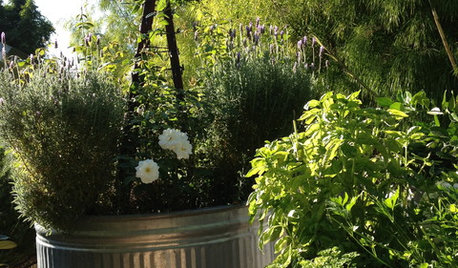
EDIBLE GARDENSGrow Herbs for Fresh Flavor and Good Looks in the Garden
With sun and a patch of ground, you can have all the fresh flavor you need for cooking right outside your door. Here's how to get started
Full Story
GARDENING AND LANDSCAPINGBid Bad Garden Bugs Goodbye and Usher In the Good
Give ants their marching orders and send mosquitoes moseying, while creating a garden that draws pollinators and helpful eaters
Full Story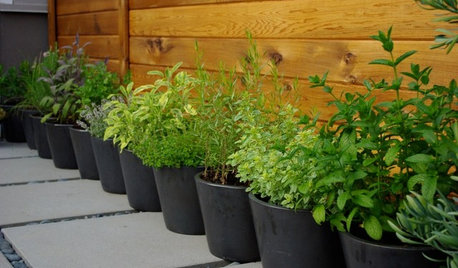
GARDENING GUIDES6 Ways to Grow Edibles in Small Places
No big backyard? Join in the grow-your-own fun with these small-space ideas for planting vegetables, fruits and herbs
Full Story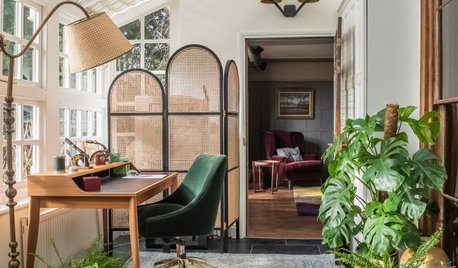
HOUSEPLANTSSimple Pleasures: Grow a Cheery Indoor Garden
Let houseplants work their magic on your rooms and you. These ideas will get you growing
Full Story
GARDENING GUIDES9 Low-Growing Hedges That Make Good Neighbors
Define garden areas or borders without blocking the view, with these evergreen shrubs that take kindly to trimming
Full Story
EDIBLE GARDENSHow to Grow Your Own Sweet Summer Crops
This guide will help any gardener get started on growing the freshest warm-season veggies and berries for summer
Full Story
EARTH DAYGrow a Beautiful Garden With Ecofriendly Greywater
Reducing home water waste means lower bills and a healthier planet. Here's how to set up a greywater home irrigation system that can help
Full StorySponsored
Central Ohio's Trusted Home Remodeler Specializing in Kitchens & Baths



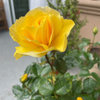
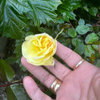
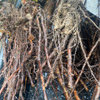

seil zone 6b MI